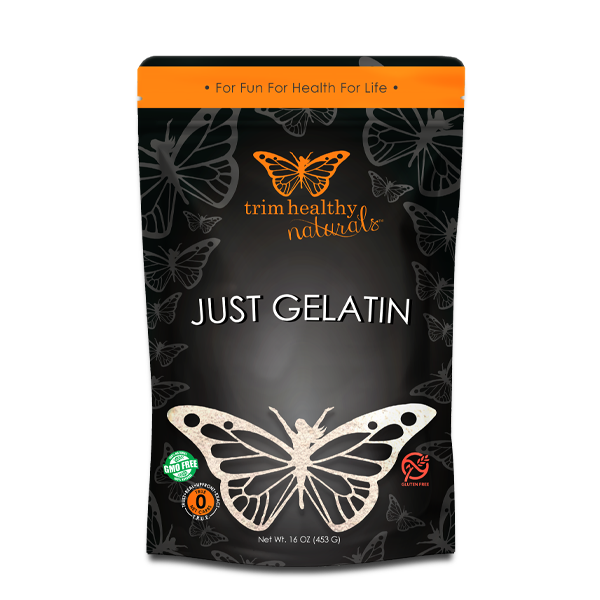Description
This Basic Custard is perfect for filling cream pies, layering in delights, or eating plain as a pudding! It tastes like my mom’s homemade cooked vanilla pudding for a peanut butter cream pie. Use it to make banana pudding, eat it with strawberry shortcake, or layer it in a trifle! THM S and low carb.
Ingredients
BLOOM:
- 2 teaspoons Knox gelatin (or 2 ½ teaspoons beef gelatin such as Great Lakes beef gelatin or THM Just Gelatin)
- 2 tablespoons cool tap water
WHISK:
- 2 cups unsweetened almond or cashew milk
- ½ cup heavy whipping cream
- 4 egg yolks
- 2 tablespoons oat fiber
- 3/8 teaspoon salt
- ¾ teaspoon glucomannan
WHISK IN AFTER COOKING:
- 1 tablespoon salted butter
- 2 teaspoons vanilla extract
- 2 ½ tablespoons THM Super Sweet Blend (or more, to taste)
Instructions
BLOOM the gelatin in the cool water and set aside. (Just whisk the gelatin and water together in a small dish and let it sit for a few minutes.)
WHISK the almond milk, cream, egg yolks, oat fiber, and salt together in a saucepan on the stovetop. Add the glucomannan last, a little at a time while whisking so it doesn’t clump.
COOK the custard mixture over medium heat (try medium low if using a gas stove), whisking often, until the custard registers 160*F on a digital instant read thermometer. Whisk constantly as the custard nears the desired temperature.
Once the custard reaches 160*, pull it off the burner and immediately whisk in the bloomed gelatin and the butter to keep the temperature from rising further. Add the vanilla and sweetener and whisk until the gelatin is completely dissolved.
Pour the custard into a heatproof bowl and then cover with plastic wrap, making sure the plastic wrap is touching the entire surface of the custard to prevent a skin from forming. Let the custard cool on the counter, then chill in the fridge for 4 hours or until set. Overnight is great!
SERVING: Eat the custard on its own as a pudding, or use it in a dessert. If you intend to spread it into a pie crust or a delight, let the custard chill first, then spread it into your dessert as gently as possible once firm to avoid messing up the creamy texture. (TIP: chill the custard in a bowl that is near the same diameter as your intended dessert pan so you won’t have to disturb it much.) If eating this custard on its own as a pudding, you could pour the warm custard into individual glasses to chill for a pretty presentation!
IN DELIGHTS: This amount of custard makes about a three-quarter inch layer in an 8” x 8” pan. Make a 1.5x batch if you want a thicker layer (depending on how many other layers your dessert has).
AS PUDDING: Leave out ½ teaspoon of the gelatin (either Knox gelatin or beef gelatin) so it doesn’t set so firmly if you want to eat this custard as a pudding on its own. I prefer a firmer set when using this custard in a dessert so it holds its shape well.
Notes
A digital thermometer is very useful when making custards, but I made custard for years without one. Just cook it slowly as noted above until it noticeably thickens as the egg yolks set. Don’t bring it to a boil – that’s 212*.
It’s best to bring the custard up to temp slowly to avoid scrambling the eggs, but I often rush things over higher heat without terrible consequences…. Once you have a feel for when to pull it off the heat, you can do this too to save time.
If the custard gets lumpy, run it through a fine mesh sieve before chilling.
The combination of gelatin, oat fiber, and glucomannan results in a better texture than just using one of the above. It’s not slimy (like it might be if using only glucomannan), has plenty of setting power, and is still nice and creamy.
Gelatin: I prefer Knox gelatin in custards like this because it dissolves better and results in a creamier, less curdly texture (especially if you have to spread the custard into a dessert after it has set). Knox gelatin sets up stronger than beef gelatins like Great Lakes beef gelatin or THM Just Gelatin, so adjust the amount as noted in the ingredients.
Oat fiber: this versatile low carb flour can usually only be found online. Not all brands are created equal, but I like LifeSource oat fiber. Oat fiber is a really fine flour that won’t make your custard gritty, and I don’t know of any great substitutes.
Glucomannan: you can probably use xanthan gum in place of the glucomannan if you prefer.
Sweetener: feel free to use your favorite low glycemic sweetener to taste in place of the THM Super Sweet Blend. Sweeten to taste to make sure you end up with a result you like! A lot of people like more sweetener than I do.
Allergy info: Use gluten free oat fiber for a gluten free custard.
This recipe is an update on the Vanilla Pudding or Pie Filling recipe on page 343 of Necessary Food. This Basic Custard post was originally published on May 20, 2015, but on April 13, 2021 I replaced it with this updated recipe.
- Prep Time: 5 mins
- Chill Time: 4 hours
- Cook Time: 10 mins
- Category: Desserts
- Method: Stovetop
- Cuisine: THM S, low carb, sugar free, gluten free







